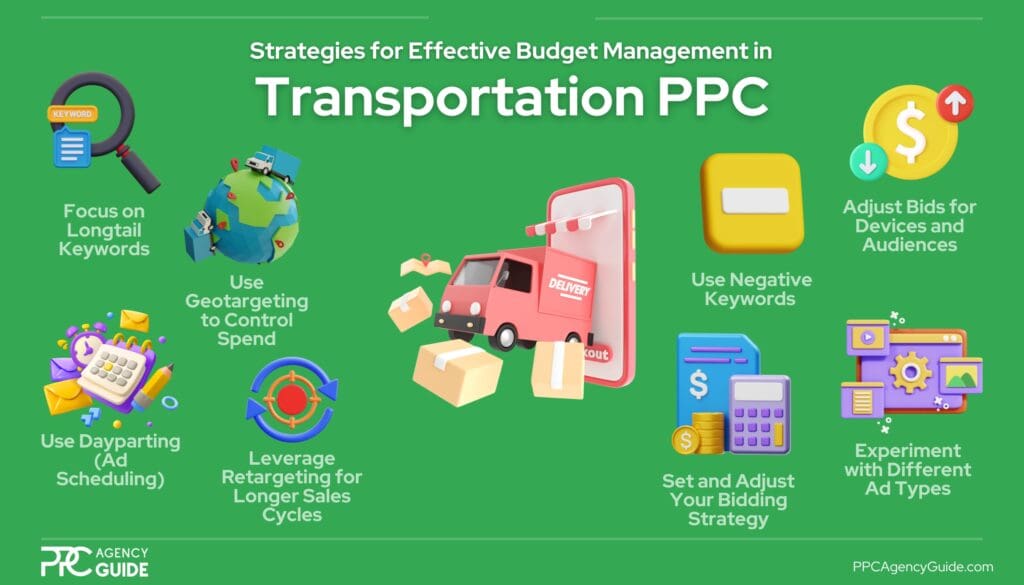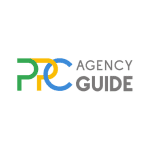
Two in five advertisers feel their pay-per-click (PPC) budget is lower than they’d like, according to HubSpot. Moreover, just one in ten optimize their Google Ads weekly, making it easy to overspend on irrelevant clicks or miss out on strategic opportunities. For transportation companies, this challenge is amplified when competing against industry giants like UPS or FedEx, whose massive ad budgets can easily dominate broad search terms. But, leveraging smart transportation PPC strategies can level the playing field. We’ll walk you through a few proven tactics below.
Understanding the Unique Challenges of PPC for Transportation Services
When we talk about transportation services in the context of PPC, we’re referring to businesses that handle the movement of goods or people—everything from freight carriers and logistics companies to local taxi services or even specialized transport like refrigerated trucking. It’s a pretty broad category, but the one thing they all have in common is they’re responsible for moving something from point A to point B, whether that’s people, packages, or products.
Businesses in this category face unique challenges compared to other industries. Let’s explore what sets it apart first.
Highly Competitive Keywords
The transportation sector, especially areas like freight and logistics, is crowded. You’ve got big players with massive budgets, and they’re all bidding on the same keywords. For example, if you’re a local trucking company and you’re trying to bid on “freight services,” you’re going head-to-head with national giants like UPS or FedEx. That’s a tough game to play unless you’re strategic about your keyword targeting.
Seasonality and Demand Spikes
Another curveball is seasonality. Think about how demand for transportation changes throughout the year. The holiday season, for instance, puts huge pressure on delivery services, while certain industries like agriculture might see a boom during harvest seasons. Your PPC campaigns have to be flexible enough to ramp up when demand is high and scale back when things slow down. If you’re not watching your campaign like a hawk, you could be wasting money during off-peak times.
Geographic Targeting is Crucial
Unlike some industries where you can advertise globally or even just nationally, transportation services often need to focus on specific geographic areas. For example, if you’re running a regional trucking company, your ads should only be showing up for people within your service area. However, the trick is to not just rely on geotargeting based on location. You might also want to layer in targeting based on search intent. So, instead of only focusing on “freight services Austin,” you could target broader terms like “refrigerated trucking” but serve ads only to users in Texas.
Longer Sales Cycles
For many transportation businesses, especially in B2B contexts like freight logistics, sales cycles are longer. It’s not as simple as someone clicking your ad and buying a service. It could take weeks or even months to close a deal, so your PPC strategy needs to account for this. You’re not just driving clicks. You’re nurturing leads over time. This might mean retargeting ads or even using a mix of search and display ads to keep your brand top-of-mind throughout the decision-making process.
Variety of Services Means Varied Messaging
Transportation services aren’t one-size-fits-all. You might be offering anything from freight forwarding to last-mile delivery to passenger transport, and each service needs its own tailored PPC approach. For example, a campaign targeting customers looking for “reefer trucks” (refrigerated transportation) will require different keywords, landing pages, and ad copy compared to a campaign for “bulk freight shipping.” That’s where things can get tricky. You have to nail your messaging for each segment of your audience.
Regulatory and Legal Constraints
This is something that doesn’t always come up in other industries, but in transportation, there can be specific legal and regulatory hurdles that influence your ads. Some transportation services, especially those involving hazardous materials, have to follow strict guidelines about what they can and can’t advertise. You need to ensure that your PPC ads comply with both federal and state regulations.
Strategies for Effective Budget Management in PPC Campaigns
Budget management in PPC can be a tricky balancing act, especially when you’re up against those big-name players like UPS or FedEx. But here’s the good news—you don’t need a Fortune 500 budget to compete effectively. It’s all about being strategic with how you allocate your spend, finding the sweet spots where you can stand out without breaking the bank. Let’s explore some key strategies for managing your PPC budget when you’re in the transportation space.

Focus on Longtail Keywords
If you’re going head-to-head with industry giants, trying to bid on generic keywords like “freight services” or “transportation solutions” is a fast way to drain your budget. The cost-per-click (CPC) on those popular, short-tail keywords can skyrocket. Instead, you want to hone in on longtail keywords, which are more specific, less competitive phrases.
For example, instead of bidding on “trucking services,” try something like “refrigerated trucking services in Phoenix.” These keywords might not get the same volume of traffic, but they often have much higher intent and lower CPC. Plus, if someone’s searching for something that specific, they’re likely closer to making a decision, which means you’re not just paying for clicks. You’re getting more bang for your buck by driving higher-quality traffic.
Use Geotargeting to Control Spend
Transportation services are often regional or local, so don’t waste your budget advertising to people outside your service area. Geotargeting allows you to focus your ads only on the areas you serve. But, there’s a more advanced layer to this strategy. Consider radius targeting rather than just using city or state filters. For example, you could set your ads to show only within a 25-mile radius of your key hub, capturing a more relevant audience.
Also, look at where your competitors aren’t targeting. If you notice that your competition is heavily bidding on keywords in certain states but ignoring others, focus your ad dollars on those less competitive regions. Sometimes, the biggest win is in the gaps the big players leave behind.
Dayparting (Ad Scheduling)
Another sneaky way to manage your PPC budget effectively is through ad scheduling or “dayparting.” This allows you to run your ads only during peak hours when your target audience is most likely to convert. In transportation, timing is everything. If you’re advertising logistics or freight services, your potential clients, especially B2B, are typically browsing during business hours, not late at night.
By running your ads during specific time windows, you can stretch your budget further. For example, you might find that Monday mornings and Friday afternoons get the most conversions because that’s when businesses are organizing their shipping needs. Use that data to avoid spending during low-conversion times.
Leverage Retargeting for Longer Sales Cycles
As mentioned earlier, transportation services often have longer sales cycles, especially in B2B contexts. This means that a potential client may visit your site multiple times before converting. Instead of trying to close the deal in one shot, use retargeting ads to stay top of mind.
Retargeting works by showing ads to people who’ve already visited your website, encouraging them to come back and complete the action, be it filling out a form, scheduling a call, or making a booking. Because this audience is already familiar with your brand, these clicks are usually cheaper, and the conversion rate is higher. It’s a way to nurture those leads without having to constantly chase new, more expensive traffic.
Adjust Bids for Devices and Audiences
You don’t have to bid the same amount across the board. Use bid adjustments to allocate your budget more effectively. For instance, if you notice that mobile users are less likely to convert for your transportation service, but desktop users have a higher conversion rate, you can increase bids for desktop searches while lowering them for mobile.
You can also adjust your bids based on audience segments. Let’s say you’re a trucking company and you’ve segmented your audience into different groups, including returning visitors, past clients, or people who have visited your pricing page. You can set higher bids for users who are more likely to convert, helping you focus your budget on the most valuable prospects.
Use Negative Keywords to Avoid Wasteful Spend
Negative keywords are gold for budget management. They prevent your ads from showing up for irrelevant searches, which can help you avoid wasting money. For example, if you’re a freight company that doesn’t handle personal moves, you’ll want to add “moving companies” or “personal moving services” as negative keywords. This way, you’re not paying for clicks from people searching for something you don’t even offer.
Regularly review your search term report to spot keywords that are eating into your budget but aren’t relevant to your business. You’d be surprised at how often this happens, even with a well-set-up campaign.
Experiment with Different Ad Types
Text ads are the bread and butter of PPC, but they’re not the only game in town. Experimenting with different ad formats, like display ads or video ads, can sometimes give you more visibility for less spend. Display ads, for example, tend to have a lower CPC compared to search ads and can be great for building awareness, especially if you’re looking to break into new markets.
For instance, if you’re launching a new route or expanding your transportation services to another region, display ads can get your name out there without burning through your budget. Similarly, video ads can be powerful for storytelling, like showcasing your fleet or highlighting testimonials from clients, and they often generate more engagement for a lower cost.
Set and Adjust Your Bidding Strategy
Lastly, you want to keep a close eye on your bidding strategy. If your campaign objective is to maximize clicks, but you’re finding that you’re blowing through your budget without seeing conversions, it’s time to reassess. For transportation services, a cost-per-acquisition (CPA) bidding strategy often works better. With CPA, you’re setting a specific goal around how much you’re willing to pay for a conversion rather than just a click.
This ensures that your budget goes toward actual leads or customers, not just traffic. If the transportation services you offer are high-ticket, you might even want to experiment with target ROAS (return on ad spend) bidding, where you optimize based on the value of conversions, helping you focus on the quality of leads rather than just quantity.
Enhancing PPC Ad Performance Through Targeted Campaigns
Maximizing PPC results is all about making your campaigns as targeted and refined as possible. It’s less about throwing money at ads and more about zeroing in on your audience with laser focus. There are several methods you can use to enhance performance by dialing in on exactly who you’re trying to reach.
Audience Segmentation: Speak to Different Types of Customers
A one-size-fits-all approach rarely works in PPC, especially for transportation services where you might serve different types of clients—freight companies, local businesses, or even consumers. Each of these segments has different needs and pain points, so your messaging should be tailored to address them specifically.
For example, let’s say you’re running ads for a trucking company. Your B2B clients may be looking for logistics solutions, while local businesses might need last-mile delivery. With audience segmentation, you can create separate campaigns for each of these groups. Use tools like Google Ads Audience Manager to create custom audiences based on their behaviors, interests, or previous interactions with your site. For instance, you can target logistics managers searching for freight solutions with one set of ads and offer local retailers something completely different. By speaking directly to their needs, you can drastically improve your click-through rate (CTR) and conversions.
Dynamic Keyword Insertion
If you’re targeting multiple long-tail keywords across a variety of search terms, manually adjusting your ad copy for each can be time-consuming. That’s where dynamic keyword insertion (DKI) comes into play. This feature automatically updates your ad’s headline to match the user’s exact search query. It makes your ads feel hyper-relevant, increasing the likelihood that someone clicks on them because it matches their specific need.
For example, if someone searches for “affordable refrigerated trucking in New York,” DKI will insert that exact term into your ad, which is way more compelling than a generic “refrigerated trucking services” headline. Keep in mind, though, that DKI works best when you’ve tightly organized your ad groups around similar terms so you don’t end up with awkward or irrelevant combinations.
Refine Your Targeting with In-Market Audiences
One of Google Ads’ more advanced features is in-market audiences, which lets you target people who are actively researching or comparing services similar to yours. Google knows when people are in the market based on their recent search behavior, website visits, and even YouTube activity. So, if someone is looking into freight companies or shipping solutions, you can specifically target them as they’re nearing a decision, ensuring your ads show up at the right time.
This targeting can be even more valuable in the transportation industry, where a lot of businesses will only start shopping for new services when a specific need arises. For instance, maybe they need to quickly move perishables or they’ve expanded their business and need more transport capacity. By targeting these in-market audiences, you’re putting your ads in front of people who are already primed to convert.
Utilize Custom Intent Audiences
Google’s custom intent audiences allow you to create audiences based on specific keywords that potential customers are searching for across Google and YouTube. This is an amazing way to pre-emptively reach people who might be interested in your transportation services. You can create your custom audience by inputting keywords like “logistics solutions for small businesses” or “freight forwarding companies,” ensuring your ads reach users based on exact search intent.
This goes a step beyond traditional keyword targeting because it lets you build an audience of people actively searching for the services you offer, even if they haven’t directly interacted with your business yet. For transportation services, which can be a high-stakes and high-value decision, getting in front of the customer early changes everything.
Leverage Lookalike Segments or Similar Audiences
Similar Audiences or Lookalike Segments are incredibly powerful for expanding your reach while staying relevant. These audiences are built based on the behaviors of your existing customers. For example, if you have a list of clients who frequently book reefer trucks for transporting perishables, Google can find other users with similar behaviors or interests and show your ads to them.
It’s essentially giving you access to warm leads—people who may not have heard of your business yet but are highly likely to need your services based on how closely they resemble your current clients. This is especially useful if you’ve been running successful PPC campaigns for a while and have collected data on what your best customers look like. With Similar Audiences, you can widen your net without diluting your relevance.
A/B Testing Your Ad Copy and Landing Pages
You can’t talk about enhancing PPC performance without discussing the importance of A/B testing. This goes for both your ad copy and the landing pages they lead to. Small tweaks can make a big difference. For example, try testing different calls to action (CTAs), like “Get a Free Quote” versus “Learn More.” Or, experiment with different messaging based on urgency, such as “Fastest Reefer Trucking in Phoenix” versus “Guaranteed On-Time Delivery.”
On the landing page side, consider testing out different layouts, headlines, or even offers. For instance, you might test whether offering a free consultation gets more conversions than a simple quote request form. For transportation services, where businesses are often choosing between several providers, it’s crucial to optimize that first impression they get after clicking your ad.
Use Ad Assets to Boost Clicks
Adding a single asset (formerly known as an extension) can improve click-through rates by as much as 15 percent, per AdEspresso. Assets let you provide additional information, like your phone number, service locations, or even links to different pages on your site, right in your ad. These make your ad more prominent and help you stand out in a crowded market.
For example, call assets can be especially effective for transportation services. Many potential clients might prefer to speak directly with someone, especially if they have time-sensitive logistics needs. By including your phone number, you make it easy for someone to call you straight from the ad. Or you could use location assets to show nearby customers that you operate in their area, adding a layer of trust.
Optimize for Voice Search
Voice search is becoming more prevalent, and it’s especially important for industries like transportation, where customers might be searching for solutions while on the move or needing a quick answer. Think about how people use services like Alexa, Google Assistant, or even Siri: they’re often asking conversational questions like, “What’s the best freight company near me?” or “How fast can I book refrigerated trucking?”

You can enhance your PPC campaigns by targeting more natural, conversational long-tail keywords that match these voice search queries. Also, optimizing your landing pages for mobile responsiveness and making sure your content answers specific questions will help capture this traffic.
Monitor and Refine Your Conversion Tracking
This one’s a bit more technical, but absolutely essential—conversion tracking. You want to make sure you’re measuring real conversions, not just clicks. For transportation services, conversions could be anything from form submissions to phone calls to quote requests.
Ensure that your Google Ads and Analytics are set up to track the exact actions that matter most to your business. This allows you to monitor which campaigns, keywords, and ad groups are driving actual results, and then you can adjust your bids and targeting accordingly. The more data you have on what’s working, the more effectively you can optimize.
Get Help Implementing These Transportation PPC Strategies
Managing PPC campaigns in the transportation sector requires industry-specific knowledge to navigate challenges like seasonality, geographic targeting, and long sales cycles. Partnering with a PPC agency that understands your unique needs can make all the difference. Let PPC Agency Guide match you with an experienced professional who can optimize your campaigns. Request a free consultation today.
FAQs on Transportation PPC Strategies
How can transportation services lower PPC costs without losing visibility?
Use long-tail keywords to avoid high-cost, broad terms. Geotargeting ensures ads reach relevant regions, and negative keywords eliminate irrelevant clicks. Adjust bids for different devices and times, focusing on high-conversion periods. Retargeting existing leads is more cost-effective than chasing new traffic.
What are longtail keywords, and why are they important in transportation PPC?
Longtail keywords are specific phrases that attract high-intent searchers. In transportation, they’re crucial because they reduce competition with industry giants and target more qualified leads. For example, “refrigerated trucking services in Phoenix” is more effective (and cheaper) than broad terms like “freight services.”
How do I use geotargeting effectively for my transportation PPC campaigns?
Geotargeting allows you to focus your ads on specific regions, ensuring you don’t waste budget on irrelevant locations. Use radius targeting for local campaigns or target specific states for regional services. Combine geotargeting with audience intent to further refine your ad reach.
What is the role of audience segmentation in transportation PPC ads?
Audience segmentation divides your audience into distinct groups based on behaviors or interests. For transportation services, this means creating separate campaigns for different customer types, such as B2B clients needing freight services or local businesses requiring last-mile delivery, improving ad relevance and performance.
How can retargeting improve conversion rates for transportation services?
Retargeting shows ads to users who’ve previously visited your site, keeping your services top of mind. For transportation, where decisions often have long sales cycles, retargeting reminds potential customers to return and complete an action, whether it’s scheduling a call or requesting a quote.
What types of ad assets (extensions) are most effective for transportation companies?
Call assets allow potential clients to contact you directly, while location assets show your service areas. Sitelink assets guide users to specific pages like quotes or service details, boosting engagement. These assets make your ads more visible and increase the likelihood of a click.
How can I optimize my PPC campaigns for seasonality in the transportation industry?
Adjust your bids and budgets based on peak seasons, such as holiday shipping for freight or harvest times for agriculture. Use ad scheduling to focus on high-demand periods and pause campaigns during slow times. Test different keywords and messaging to align with seasonal needs.
What are the best PPC campaign tips for freight companies?
For freight companies, focus on longtail keywords, geotargeting specific regions, and using negative keywords to avoid wasteful clicks. Retargeting can also help maintain visibility over longer sales cycles. Consider using ad extensions like sitelinks and call buttons to make it easier for prospects to reach you.
How can transportation digital marketing lower PPC costs without losing visibility?
In transportation digital marketing, using long-tail keywords and geo-targeting are crucial to avoiding high-cost, competitive terms. Negative keywords filter out irrelevant searches, and adjusting bids for devices or times of day can improve cost efficiency. Retargeting existing leads is also a cost-effective way to maximize visibility.
What are ad copy tips for transport services?
For transport service ads, use clear and action-driven copy that highlights your unique value. Mention specific services like “reefer trucking” or “last-mile delivery” to attract the right audience. Make your call-to-action strong, such as “Get a Free Quote Now,” and include urgency when appropriate, like “Book Today for Fast Service.”
How do you measure ROI for transport PPC campaigns?
Measuring ROI for transport PPC campaigns involves tracking key metrics like cost-per-conversion, lead quality, and customer lifetime value. Using Google Ads’ conversion tracking or integrating with your customer relationship management (CRM) software can give a clear picture of how ad spend turns into actual revenue. Retargeting campaigns and audience segmentation also help refine ROI.
What are some PPC campaign tips for transportation pay-per-click advertising?
For transportation pay-per-click advertising, focus on geo-targeting, audience segmentation, and retargeting. Utilize ad extensions for location and calls, and test different ad formats like text, display, and video ads. Always A/B test your transport service ads to see which messaging drives the most engagement.
How can ad copy be optimized for advertising for freight services?
When advertising for freight services, use ad copy that highlights fast delivery, reliability, or specialized offerings (e.g., refrigerated transport). Include clear calls-to-action like “Request a Quote Today” and tailor the language to the specific audience, such as B2B logistics managers. Testing variations is key to improving ad performance.
What are the best strategies to improve PPC ROI for the transportation sector?
Improving PPC ROI for the transportation sector involves using retargeting to engage previous site visitors, leveraging long-tail keywords to reduce costs, and focusing on high-intent keywords. Geotargeting and audience segmentation help ensure your ads reach the most relevant users, maximizing your return on investment.
How do you optimize transport service ads for seasonal changes?
Optimize transport service ads by adjusting bids and budgets during peak seasons, like holiday shipping or harvest times. Use seasonal keywords and update ad copy to reflect urgent needs, such as “Fast, Last-Minute Delivery.” Test different ad formats and messaging to align with seasonal demand.


















